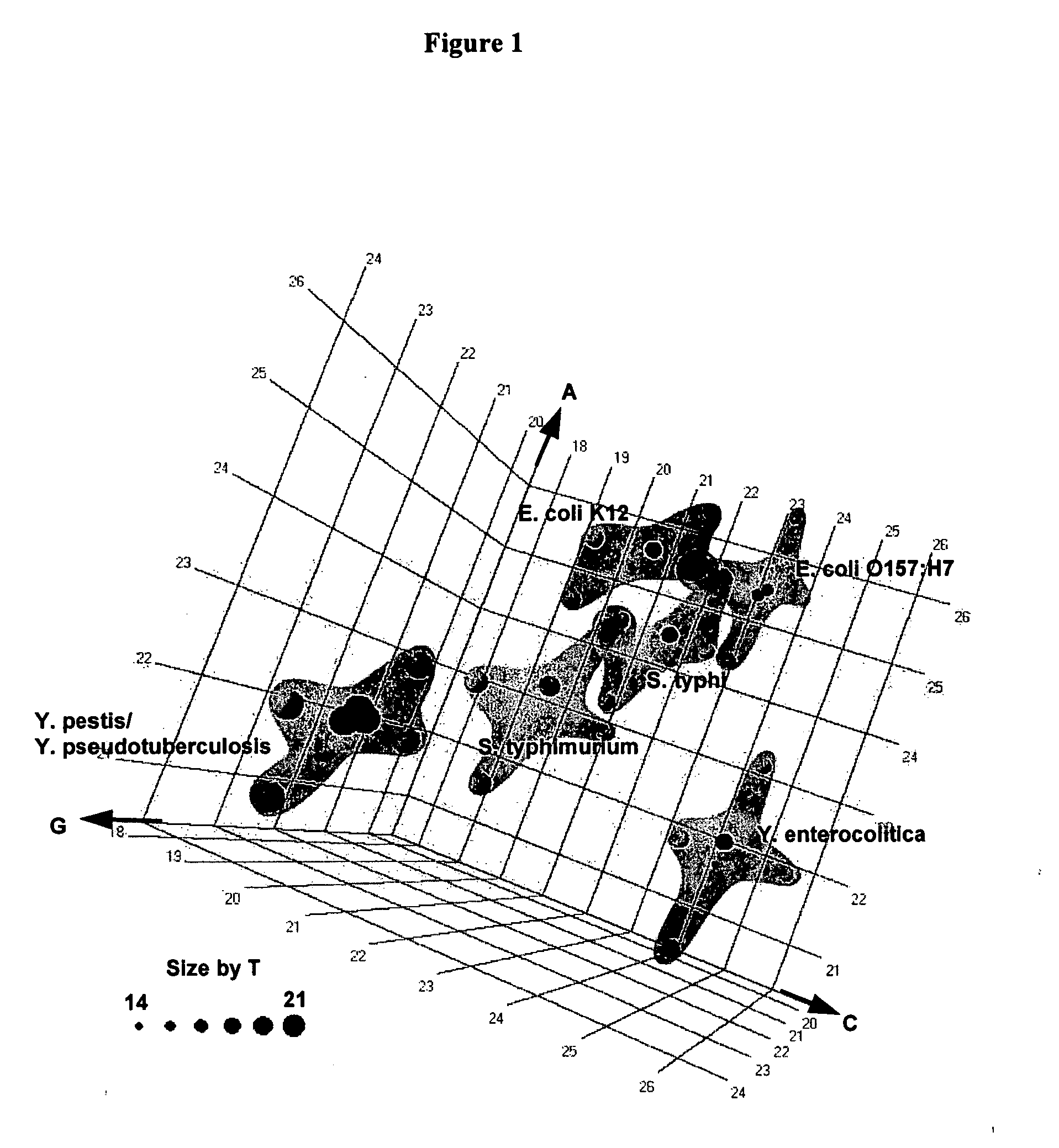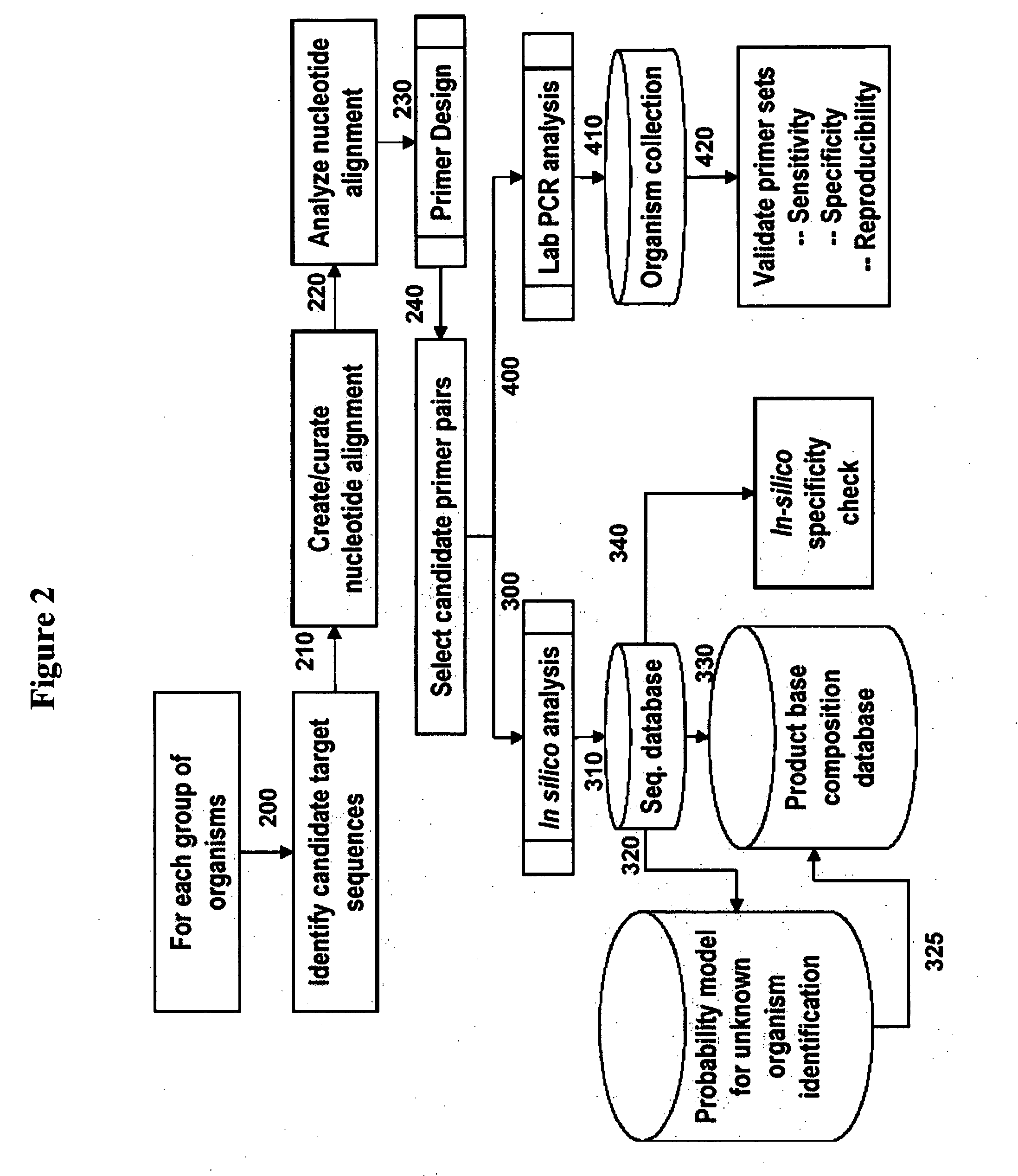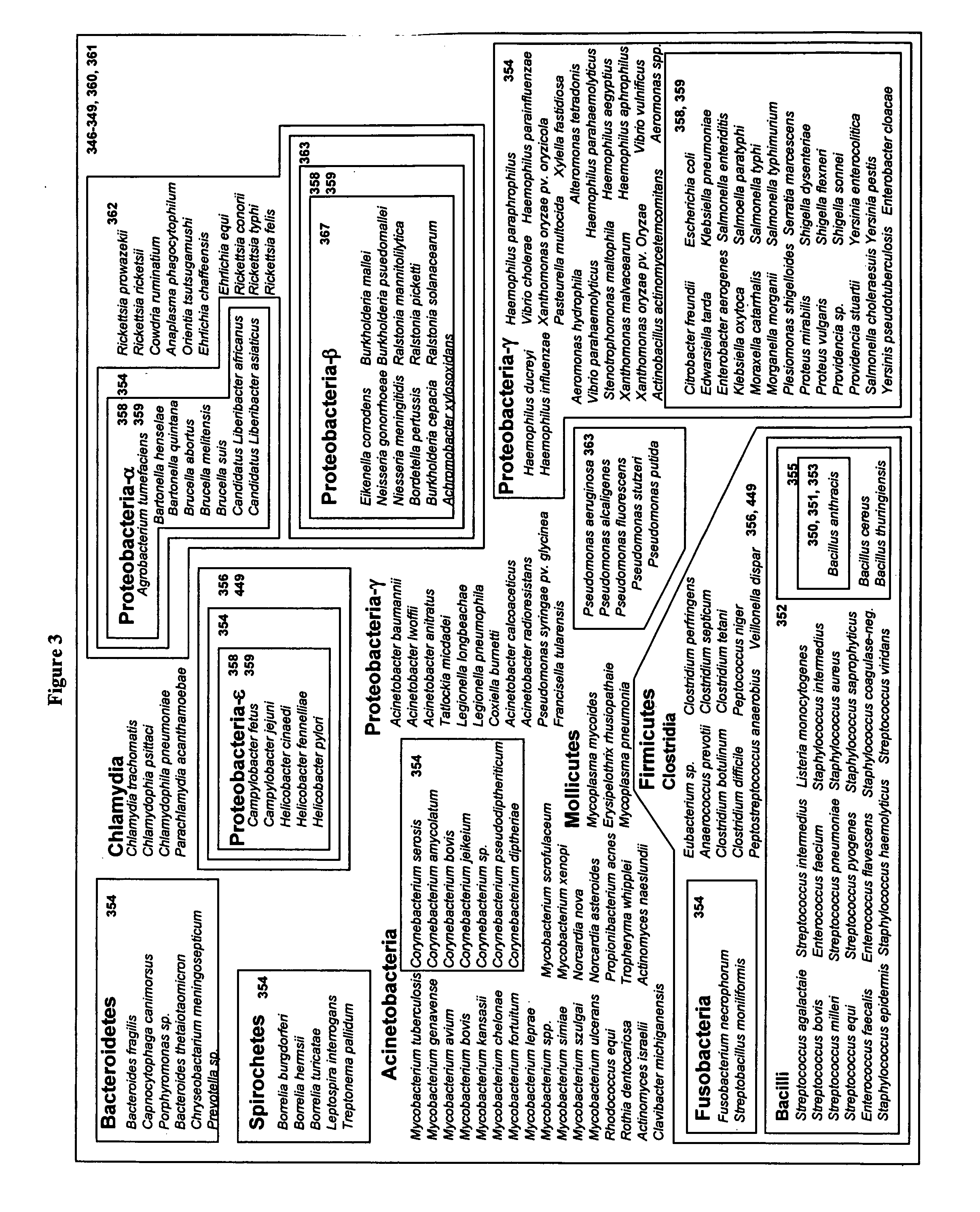Compositions for use in identification of bacteria
a technology for identifying bacteria and compositions, applied in the field of genetic identification of bacteria, can solve the problems of time-consuming and labor-intensive processes, inability to predict which of hundreds of possible pathogenic organisms might be employed in terrorist attacks, and lack of existing technology with the breadth of function
- Summary
- Abstract
- Description
- Claims
- Application Information
AI Technical Summary
Problems solved by technology
Method used
Image
Examples
example 1
Selection of Primers that Define Bioagent Identifying Amplicons
[0100]For design of primers that define bacterial bioagent identifying amplicons, relevant sequences from, for example, GenBank are obtained, aligned and scanned for regions where pairs of PCR primers would amplify products of about 45 to about 200 nucleotides in length and distinguish species from each other by their molecular masses or base compositions. A typical process shown in FIG. 2 is employed.
[0101]A database of expected base compositions for each primer region is generated using an in silico PCR search algorithm, such as (ePCR). An existing RNA structure search algorithm (Macke et al., Nuc. Acids Res., 2001, 29, 4724-4735, which is incorporated herein by reference in its entirety) has been modified to include PCR parameters such as hybridization conditions, mismatches, and thermodynamic calculations (SantaLucia, Proc. Natl. Acad. Sci. U.S.A., 1998, 95, 1460-1465, which is incorporated herein by reference in its...
example 2
DNA Isolation and Amplification
[0104]Genomic materials from culture samples or swabs were prepared using the DNeasy® 96 Tissue Kit (Qiagen, Valencia, Calif.). All PCR reactions are assembled in 50 μl reactions in the 96 well microtiter plate format using a Packard MPII liquid handling robotic platform and MJ Dyad® thermocyclers (MJ research, Waltham, Mass.). The PCR reaction consisted of 4 units of Amplitaq Gold®, 1× buffer II (Applied Biosystems, Foster City, Calif.), 1.5 mM MgCl2, 0.4 M betaine, 800 μM dNTP mix, and 250 nM of each primer.
[0105]The following PCR conditions were used to amplify the sequences used for mass spectrometry analysis: 95 C for 10 minutes followed by 8 cycles of 95 C for 30 seconds, 48 C for 30 seconds, and 72 C for 30 seconds, with the 48 C annealing temperature increased 0.9 C after each cycle. The PCR was then continued for 37 additional cycles of 95 C for 15 seconds, 56 C for 20 seconds, and 72 C for 20 seconds.
example 3
Solution Capture Purification of PCR Products for Mass Spectrometry with Ion Exchange Resin-Magnetic Beads
[0106]For solution capture of nucleic acids with ion exchange resin linked to magnetic beads, 25 μl of a 2.5 mg / mL suspension of BioClon amine terminated supraparamagnetic beads were added to 25 to 50 μl of a PCR reaction containing approximately 10 pM of a typical PCR amplification product. The above suspension was mixed for approximately 5 minutes by vortexing or pipetting, after which the liquid was removed after using a magnetic separator. The beads containing bound PCR amplification product were then washed 3× with 50 mM ammonium bicarbonate / 50% MeOH or 100 mM ammonium bicarbonate / 50% MeOH, followed by three more washes with 50% MeOH. The bound PCR amplicon was eluted with 25 mM piperidine, 25 mM imidazole, 35% MeOH, plus peptide calibration standards.
PUM
| Property | Measurement | Unit |
|---|---|---|
| length | aaaaa | aaaaa |
| mass | aaaaa | aaaaa |
| molecular mass | aaaaa | aaaaa |
Abstract
Description
Claims
Application Information
 Login to View More
Login to View More - R&D
- Intellectual Property
- Life Sciences
- Materials
- Tech Scout
- Unparalleled Data Quality
- Higher Quality Content
- 60% Fewer Hallucinations
Browse by: Latest US Patents, China's latest patents, Technical Efficacy Thesaurus, Application Domain, Technology Topic, Popular Technical Reports.
© 2025 PatSnap. All rights reserved.Legal|Privacy policy|Modern Slavery Act Transparency Statement|Sitemap|About US| Contact US: help@patsnap.com



